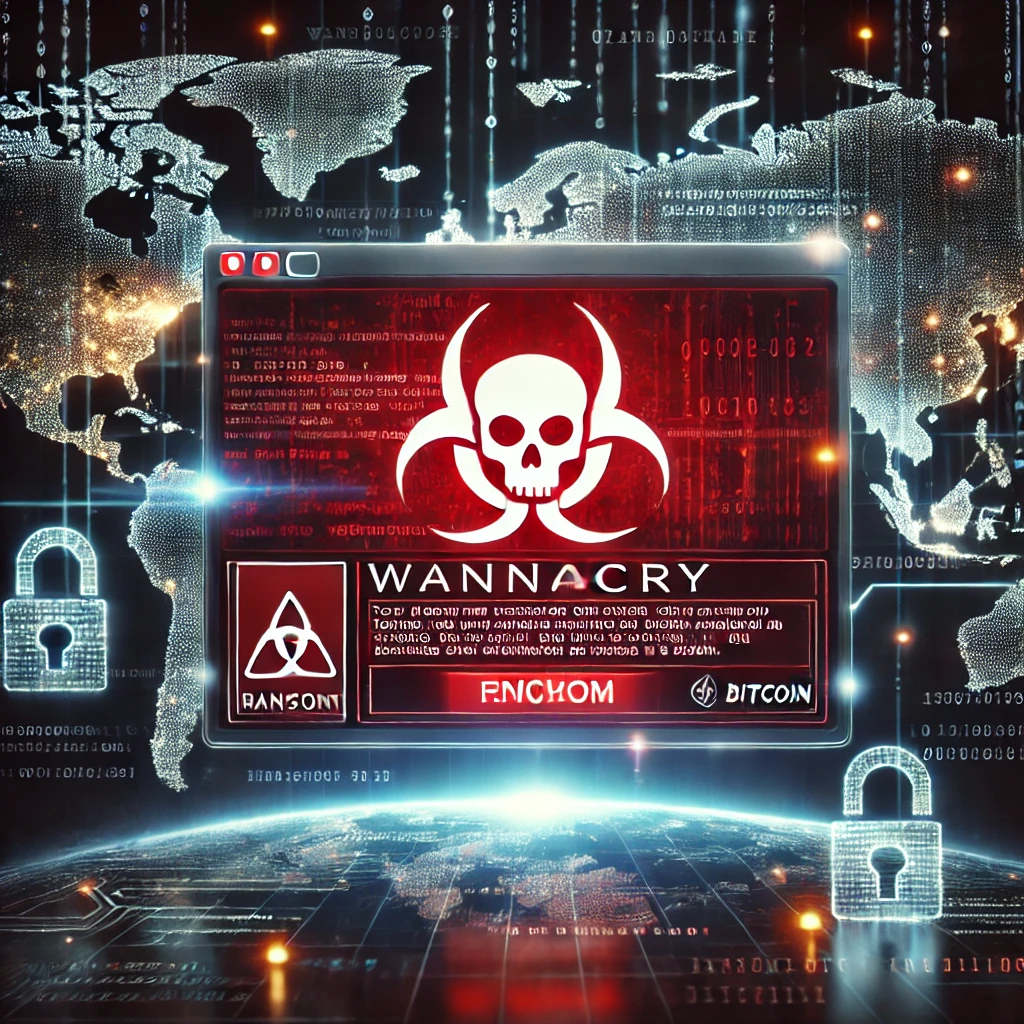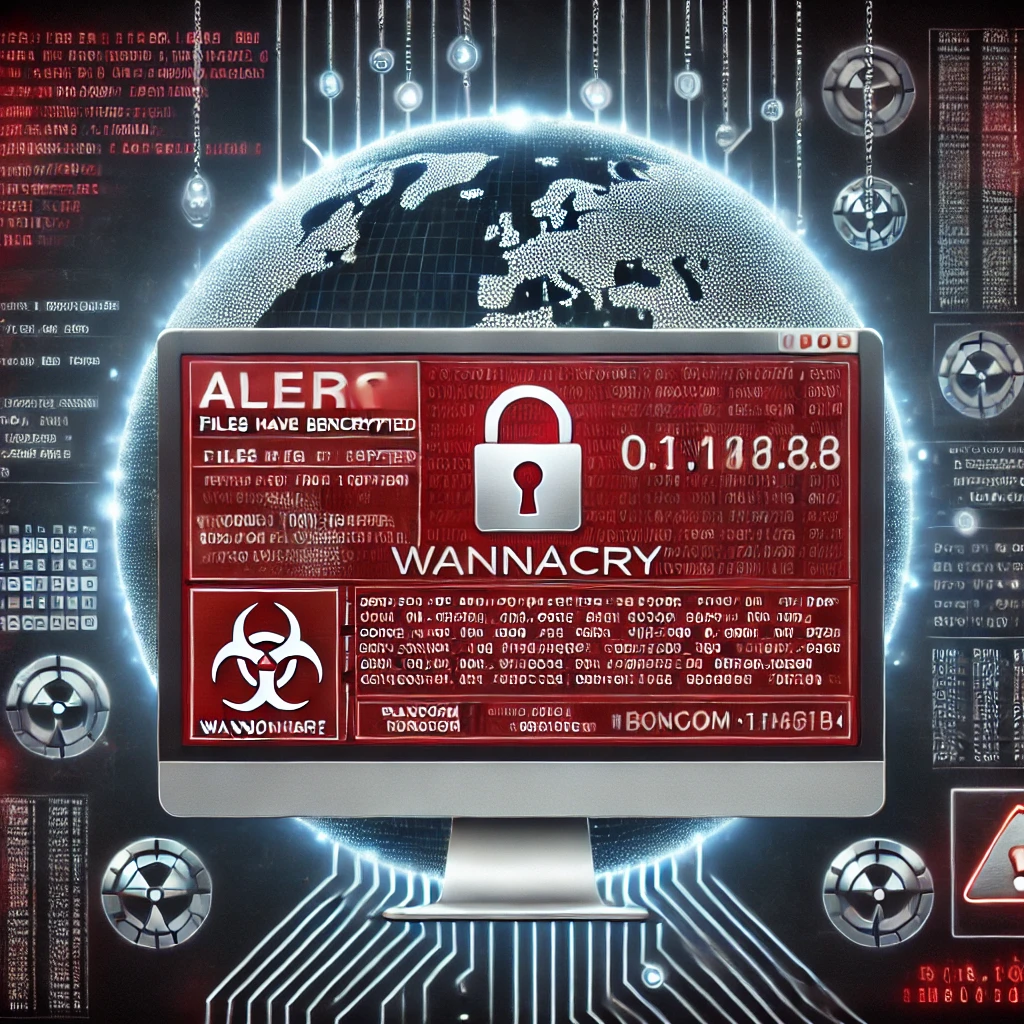The WannaCry ransomware attack, in May 2017, has been a poignant reminder of the vulnerabilities in our connected digital paradigm. In this cyberattack, more than 200,000 computers across 150 countries were affected, including large corporations and public systems including FedEx, Nissan, Honda, and the UK’s National Health Service (NHS). These had to divert ambulances and reassign patients due to compromised operational capacities.
- The attack was stopped when Marcus Hutchins discovered and activated a “kill switch”. It was registering a domain that prevented the ransomware from further execution.
- Post-WannaCry, the Zero Trust security model gained prominence, requiring continuous verification of users and devices to prevent malware spread.
What is WannaCry Ransomware Attack?
WannaCry was the new generation of a hybrid cyber threat: self-spreading like a worm, yet causing potentially disastrous damage like ransomware. An exploit against a vulnerability, previously created by the US National Security Agency (NSA) and leaked online by the Shadow Brokers hacking group, is a possible way to unleash an attack. Given the name EternalBlue, this specific vulnerability affects older, unpatched versions of Microsoft Windows. While Microsoft had released a patch one month before the exploit was leaked, poor and slow patch applications left countless systems vulnerable.
Types of Ransomware
- Encrypting Ransomware: Also known as Crypto Ransomware, this is the type of ransomware that encrypts all data belonging to a victim and asks for a ransom in return for the key to decryption.
- Non-encrypting Ransomware: most correctly known as Screen-locking Ransomware. It locks the whole device of a victim and presents the ransom demand on the screen.
- Leakware or Doxware: This threatens to publish sensitive data after a theft.
- Mobile Ransomware: Ransomware targeting mobile devices, including screen-lockers
- Wipers: Threaten to destroy data even if the ransom is paid.
- Scareware: A program that uses tactics of fear to force people to pay, sometimes disguising itself as real alerts.

How Ransomware Attack 2017 Ended
The attack suddenly ended when security researcher Marcus Hutchins found a “kill switch” in WannaCry’s code. He inadvertently stopped the attack by registering a previously non-existent domain that the malware queried before executing its payload. That domain was some kind of tripwire that kept the ransomware from locking many more systems.
Debates about Attribution
The origins of WannaCry soon became a matter of international intrigue. The US and UK governments fingered the responsibility on North Korea through a group called Lazarus. But many experts questioned the attribution, speculating that signs pointing to North Korea might have been planted to mislead investigators.
Is WannaCry Ransomware Still a Threat?
Despite the kill switch, it did not quite kill the legacy of WannaCry. Variants that no longer had this kill switch proved deadly to systems that were still using versions with unapplied patches. This points, again, to one very critical flaw in cybersecurity measures taken: very, very slow patching of available patches.
What Did We Learn?
- The Permanence of Digital Threats: The persistence of WannaCry attacks into 2021 showed very poignantly that digital threats do not expire but instead evolve. Systems running outdated software remained at risk, showcasing the necessity of regular updates.
- Global Interconnectivity and Vulnerability: The rapid spread of WannaCry underlined the fact that modern networks are interwoven across geographies. No system can claim to be an island, and the myth of isolated networks puts any organization at increased risk.
- Patch Management: The attack brought home the pressing need for timely patch management. Many organizations had a patch available to prevent the attack two months in advance but failed to respond in time.
- Critical Infrastructure at Risk: Most notably, WannaCry affected the NHS, underscoring the vulnerability of critical services to digital attacks. Systemically outdated technology, such as Windows XP, no longer supported by Microsoft, contributed to the level of impact.
- Need for Zero Trust Models: Since WannaCry, the concept of Zero Trust started to gain attention. In this model, every user and device is recognized as a threat and needs continuous verification; access will be immediately cut if any anomaly is found. This model, when in practice, will help prevent any further spread of malware like these.
WannaCry Ransomware Attack Case Study
Adding another layer to this tale comes the personal story of Marcus Hutchins, who stopped WannaCry. In his past life, Hutchins was one of those people who created and sold something that led to his arrest a few months later. The plot twist here is a good reminder of how grey the areas are between black and white in cyber warfare-where heroes and villains take up overlapping spaces.

Conclusion
While the immediate threat from this variant of WannaCry was curtailed, its descendants, along with the methodologies used by the ransomware, remain very active. The attacks continue to serve as an educational tool for the cybersecurity community, which keeps working out more stringent security measures, calling for comprehensive updates and patching against future vulnerabilities.
In all, WannaCry was something more than a wake-up call because it showed how much the concept of cybersecurity is involved in the workings of modern society. These lessons of WannaCry need to be carried forward into the technological practices and policy decisions to safeguard against the continuously developing landscape of cyber threats.
| WannaCry Ransomware Attack UPSC Notes |
| 1. A massive cyberattack in May 2017, affecting over 200,000 computers across 150 countries, including systems in corporations like FedEx, Nissan, and the UK’s NHS. 2. It spread like a worm and caused devastating damage like ransomware. It exploited a vulnerability in older Microsoft Windows systems (EternalBlue), leaked by the hacking group Shadow Brokers. 3. The attack was stopped when Marcus Hutchins discovered and activated a “kill switch” by registering a domain that prevented the ransomware from further execution. 4. The US and UK governments attributed the attack to North Korea’s Lazarus group, but some experts questioned the attribution, suggesting possible false flags. 5. Despite the kill switch, variants of WannaCry without the switch persisted, exploiting unpatched systems, and highlighting the importance of regular system updates. 6. The attack emphasized the critical need for timely software patching to prevent exploits, as many organizations had the patch but failed to apply it in time. 7. The NHS’s impact underscored how outdated technology in vital services can magnify the consequences of a cyberattack. 8. WannaCry demonstrated the enduring nature of digital threats and served as a wake-up call for cybersecurity measures, stressing the need for comprehensive patch management and security policies. |

